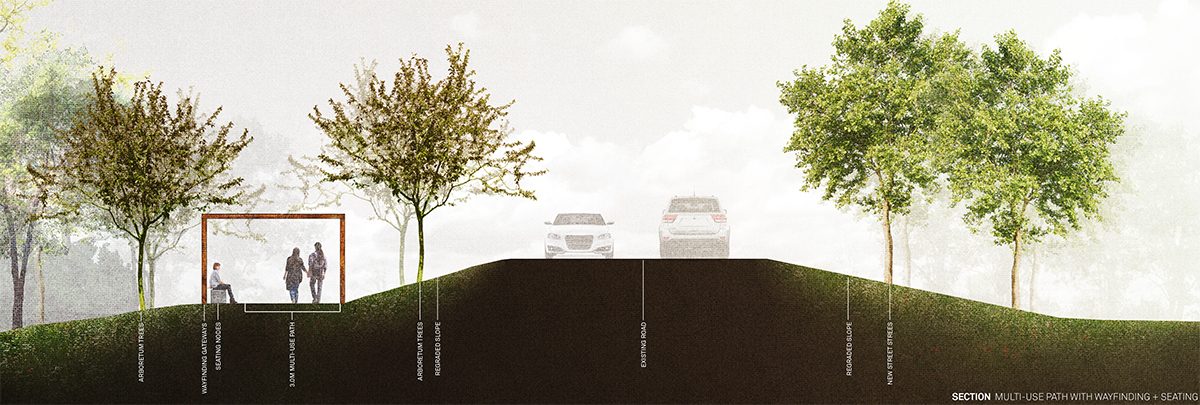
Redevelopment begins in eastern transportation corridor area
Project to include removal of decaying willows on Saunderson
Enhancements to the Saunderson Street and Dysart Road area will begin this spring 2018. Area improvements will be phased in over five years and will include road renewal, tree planting, native prairie revegetation, a multi-use path, seating, signage and wayfinding. Saunderson Street is on the eastern edge of Fort Garry campus, adjacent to the Point Lands. Saunderson Street and Dysart Road form part of the Fort Garry campus ring road network along with University Crescent and Freedman Crescent.
The significant redevelopment, which will take place over the next few years, will include the arborist-recommended removal of the rows of post-mature golden willow (Salix alba ‘Vitellina’) along the transportation corridor. The trees are in late-life decay and have been exhibiting these signs for over a decade.
The willows are expected to be removed at the end of April. According to University of Manitoba Arborist, the willows on Saunderson Street “all, without exception, display the common patterns of decline associated with this species. The species typically exhibits fast growth, but a short life.”
The trees no longer possess structural integrity or stability and continue to pose a hazard to the campus community.
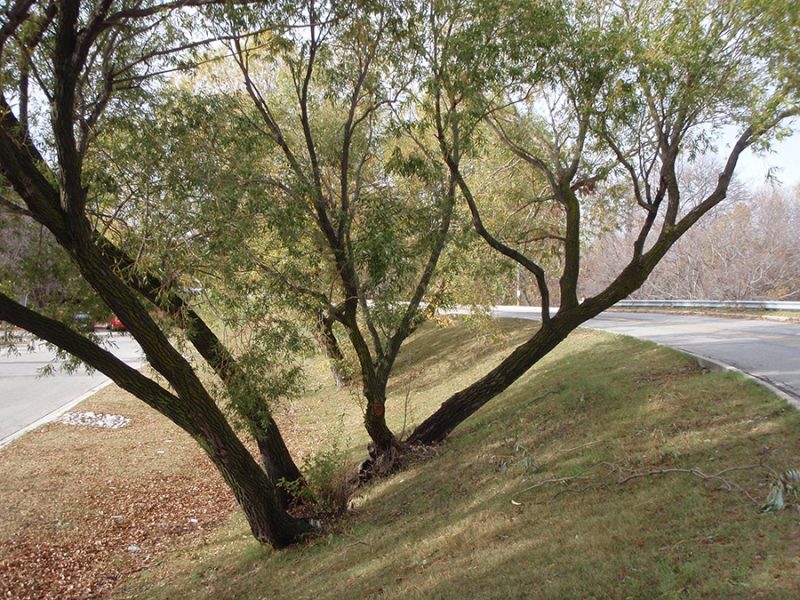
Willows on Sanderson Street, Fort Garry campus ring road.
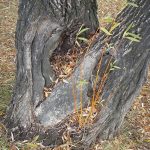
Willows detail.
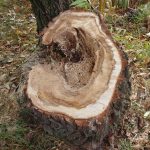
Willow detail.
“The willows are filled with dead and dying limbs, split branches and large cavities, as well as decayed and leaning trunks,” he explains. Regular maintenance can no longer keep up with the rates of decline and remediation efforts have ceased. Due to their condition and for safety reasons, they have been recommended for removal.
Other species of trees in the area include, among others, green ash (Fraxinus pennsylvanica), basswood (Tilia americana), little-leaf linden (Tilia cordata), and amur maple (Acer ginnala). A number of these trees will also be removed because of continued decline resulting from disease, and the harsh growing conditions posed by steep slopes and poor soil conditions. All tree removals will commence at the end of April.
‘Green Corridor’
The Saunderson Street transformation is an opportunity to create a unique landscape at the Fort Garry campus. As identified in the Visionary (re)Generation Master Plan’s open space framework, Saunderson/Dysart is envisioned as a “Green Corridor.”
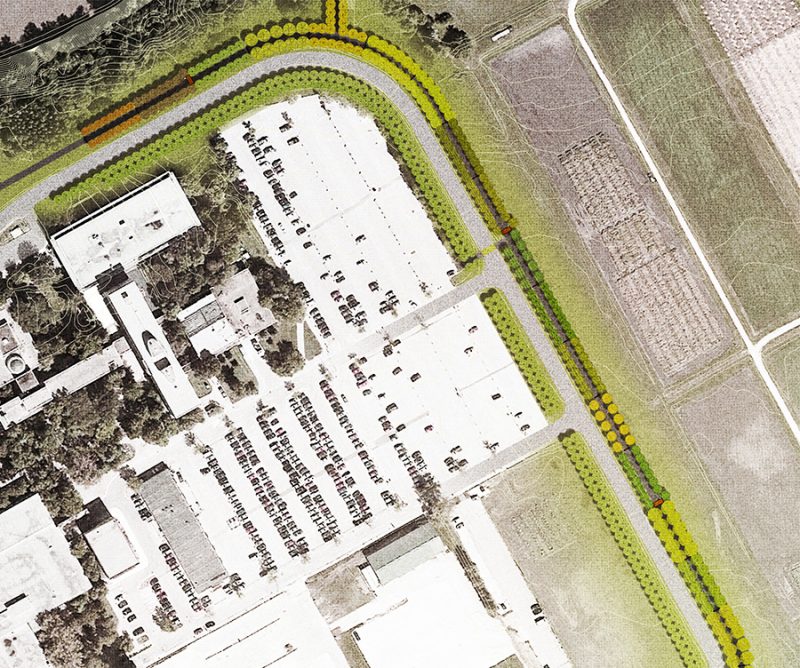
Dysart-Saunderson Redevelopment conceptual plan.
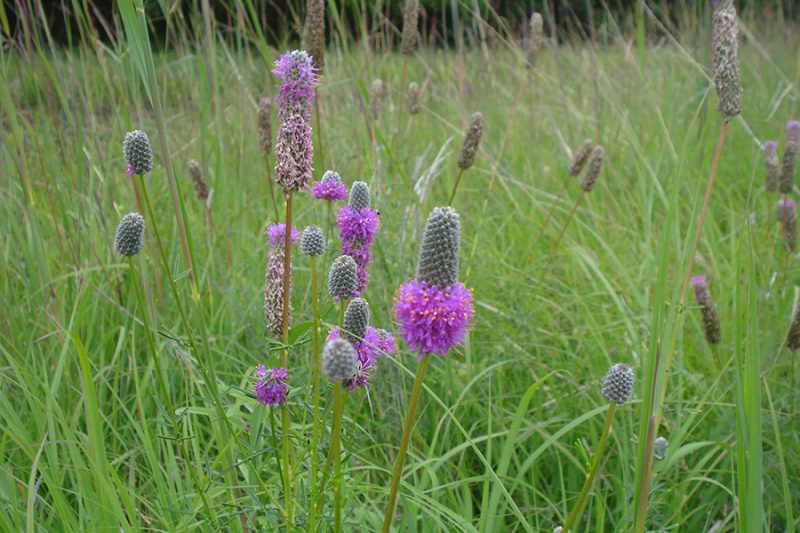
Purple prairie clover is a common forb planted in native grass mixes.
The area improvement, which will take place over five years, will integrate an enhanced public space with a “complete streets” approach that is safe, convenient, and comfortable travel for all users and transportation modes. Elements will be phased in over time, such as active transportation infrastructure and features of our native Manitoba landscape. The scenic character of this iconic corridor will include a future multi-use path lined with a variety of trees, rooted in native forbs (herbaceous flowering plants) and grasses, and punctuated with feature plantings and site furnishings.
Redevelopment implements Indigenous planning and design principles, sustainable biodiversity
The Saunderson/Dysart landscape will feature a native revegetation project, to start this spring/summer with site preparation and weed control work over the first two years and final native planting in the spring of 2020. Future enhancement will be phased in through the coming years. The redevelopment project will implement the University’s Indigenous Planning and Design Principles, which includes a ceremonial component.
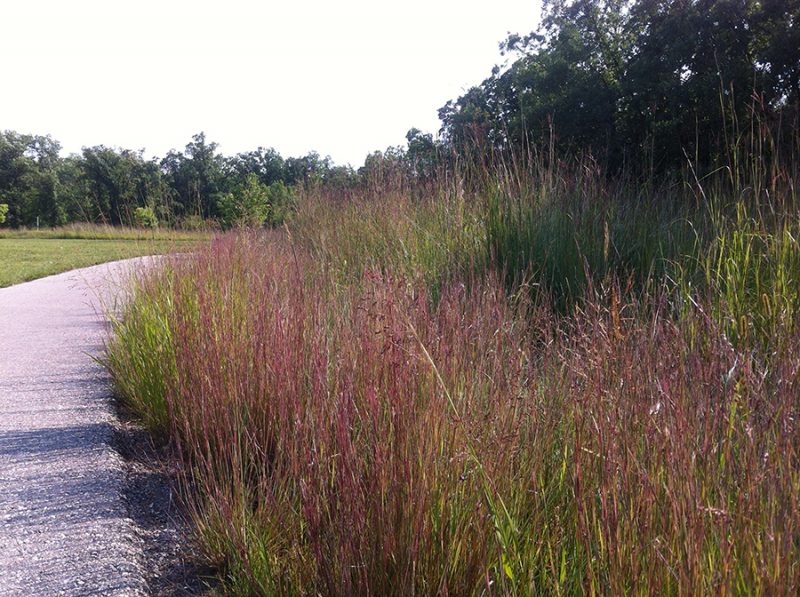
A native grass planting in Winnipeg roughly 8 years after planting.
Native prairie plantings, when planned and implemented properly, require significantly less ongoing maintenance and are considered a more sustainable alternative to conventional plantings. The revegetation will complement adjacent natural areas on campus and contribute to local native biodiversity.
The enhancement of the eastern transportation corridor will create a new “working landscape” as part of the long-term plan for the campus. This gateway to the riverbottom forest and future learning landscape of the Point Lands will transform over time, providing education and engagement for numerous faculties as well as a new recreation destination for pedestrians and cyclists alike.
Should you have any questions or concerns please contact: Vanessa Jukes, MALA, CSLA, PMP, project manager and landscape architect, Architectural & Engineering Services, Physical Plant, at Vanessa.Jukes@umanitoba.ca






